
UPDATE: In accordance to Badal’s great game, he allowed for the bandh, but won’t let this moment fall from his bony and corrupt grasp. He has already imprisoned all those that may possibly post a challenge to him. Daljit Singh Bittu and others are being imprisoned throughout Punjab as we type this post. Just as Bhai Balwant Singh Rajoana said, we are getting played by these blue-turban wearers.
Signs of victories and congratulations are being issued by Sikhs on social media. The question was not ‘if’ a stay would be announced, but ‘when.’ This is the game….
It was always going to occur. More than even the Central Govt, Badal fears the Shaheed. The Shaheed has convictions, where he has none. This is how Badal does stage management of the Sikhs – allow the kettle to boil, but not too much. Then show the Central Government that only you are the mastermind that can “control” the Sikhs, cementing your importance to them.
How to break this? Up the ante. This is my humble suggestion – Bhai Balwant Singh Rajoana has showed his convictions. While we (against his wishes) circulated petitions and asked for clemency, he only asked for justice. The stage is set. If he were to begin a hunger strike for justice asking for the release of all political prisoners, the Government of India could not accede. The Punjab Government would be brought to its knees if during this hunger strike, the Sikhs converged upon Patiala.
Let us not pat our backs about the “stay.” We are being manipulated before our eyes. We have seen our potential (the amazing pictures of kesri flags throughout Punjab and even at India Gate attest to this). However, the march must continue….
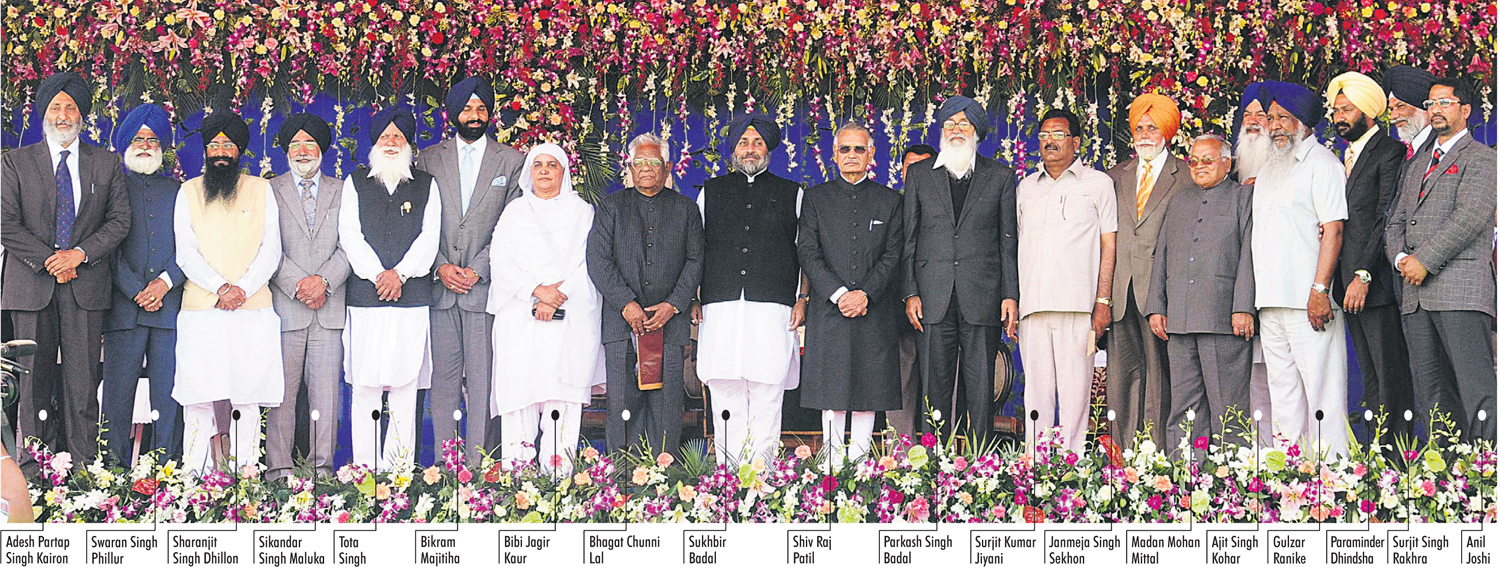
WARNING: This is long!
Last week, the Punjab election results surprised many. Most pundits had believed the cycle of anti-incumbency would continue and the Shiromani Akali Dal (Badal) would fall to the Congress Party, under Captain Amrinder Singh’s leadership. The results were stunning and after the final count the Akali Dal (56) combined with the BJP (12) had a majority (68) of the 117-member Punjab Legislative Assembly. The Congress Party had finished with a dismal 46 and 3 seats were claimed by Independents. The much-heralded (at least in the diaspora and on the internet) Punjab People’s Party of Manpreet Badal finished even worse than expected, with the main leader himself finishing in 3rd place in the two constituencies he contested.
Now the debate has shifted to making sense of the elections. In the diaspora, laments such as that of my fellow langa(w)riter decrying corruption and the social ills that have been broadcasted – farmer suicides, drug addiction, etc. Writers in Punjab, such as Yadvinder Curfew saw the victory not as that of the Akali Dal-BJP combine, but of a new ‘experiment’ by Sukhbir Badal and the shift in politics from issue based politics to one of media and money. The Badal family has control of both. Friends across social media spaces have provided their own analysis – from the business classes aligning with Sukhbir now that the populism of his father is dead [pagh salute @VehlaComrade] to swing voters, especially cash voters (aligning with the ruling AD-B) and ‘educated netizens’ (splitting between PPP and Congress) [pagh salute @askang – not the singer, mind you!] tilting votes in favor of the Akali Dal.
Now I get to add my voice. Hopefully in doing so, it will also help diasporic Sikhs and Punjabis understand the politics of Punjab and understand why seemingly irrational choices (those that everyone knows are corrupt) can still be rational.
I turn to political science explanations, although I am no political scientist, in order to help understand the results and the specificities of the politics of Punjab. I cite some of the most common explanations and offer some rambling comments, criticisms, and reflections. Hopefully in the comments section, you will add yours and we can have a great discussion.
This video, part of a longer version produced for the Discovery Channel, invites viewers inside the Darbar Sahib in Amritsar [via Gurumustuk Singh]. It’s a rare opportunity to see some remarkable moments inside the complex and apparently this is the first time it has been televised. I believe it was recently shown in India and will be shown worldwide soon.
Some thoughts after the jump…
I love books – but I have a special, and perhaps curious, interest in books by and about Sikhs. Perhaps it’s the fascination to discover how similar or different our experiences are. I’m convinced i’m not alone in this. There has been an established interest in South Asian literature for quite some time, but now – with the growing number of authors covering the British Sikh or North American Sikh experience – there is piqued enthusiasm in diasporic “Sikh Literature”. I think it’s important to support this type of work – not simply because the author is Sikh or writes about Sikhs – but because until we have enough of this representation in literature, we need to encourage it’s growth. This also means that authors will be faced with higher expectations from their readers who want authentic stories, sophisticated writing and dymanic story telling – just as we’d expect from any other piece of literature.
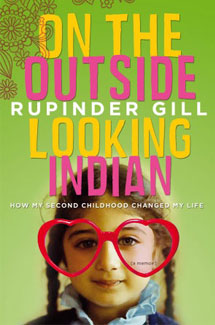 I recently read Rupinder Gill’s memoir, On the Outside Looking Indian. The premise and cover of the book attracted me, perhaps because it reminded me of Sathnam Sanghera’s, If You Don’t Know Me By Now – a book I highly recommend. Gill’s memoir, similar to Sanghera’s, deals with her personal experience growing up as the child of immigrants. Gill’s story is set in Canada and focuses on her year-long quest, at the age of about 30, to fulfill a list of her childhood dreams — learning to swim, going to Disney World, and living in New York etc – activities she didn’t participate in as a child. I found Gill’s descriptions of her childhood to be well-written, funny and often relatable.
I recently read Rupinder Gill’s memoir, On the Outside Looking Indian. The premise and cover of the book attracted me, perhaps because it reminded me of Sathnam Sanghera’s, If You Don’t Know Me By Now – a book I highly recommend. Gill’s memoir, similar to Sanghera’s, deals with her personal experience growing up as the child of immigrants. Gill’s story is set in Canada and focuses on her year-long quest, at the age of about 30, to fulfill a list of her childhood dreams — learning to swim, going to Disney World, and living in New York etc – activities she didn’t participate in as a child. I found Gill’s descriptions of her childhood to be well-written, funny and often relatable.
Without a doubt, many of us can relate to childhoods of inactivity – unless activity consisted of housework – then no, we really didn’t participate in many activities, especially compared to how busy and structured the lives of children are today. There are obvious exceptions to this, however, this is most likely a common experience for many. While Gill’s story is framed around a Panjabi Sikh household, it’s clear that her experiences could be those of many first-generation children whose parents have emigrated to new lands.
 Toronto is abuzz. This weekend the IIFA [International Indian Film Academy] awards are being held in Toronto to many a South Asian’s delight. We are, however, delighted about Toronto for another reason. This weekend, The Sikh Activist Network will be hosting When Lions Roar 3 – a night of hip hop, poetry, R&B and other art to remember the events of 1984.
Toronto is abuzz. This weekend the IIFA [International Indian Film Academy] awards are being held in Toronto to many a South Asian’s delight. We are, however, delighted about Toronto for another reason. This weekend, The Sikh Activist Network will be hosting When Lions Roar 3 – a night of hip hop, poetry, R&B and other art to remember the events of 1984.
There is much that can be said about the comparisons between the two events. The IIFA essentially celebrates bollywood – an industry that frustrates many conscious Sikhs living in both India and the diaspora. The representation of Sikhs in bollywood films has been an area of discontent with Punjabis and Sikhs being portrayed as hypermasculine and other cringe-worthy stereotypical roles [read Navdeep’s piece, Media and the Sikhs]. While many applaud the increased presence of Sikh turbans in bollywood films, others may argue that this presence has not necessarily changed the typical Indian’s perception of Sikhs in a positive way. For example, in Indian media – Sikhs continue to be portrayed with words such as terrorist, extremist and radical [read this inaccurate and uninformed article]. I’m not anti-bollywood by any means – there are definite exceptions to the bollywood trend of representing Sikhs in a one-dimensional manner. However, I think it’s important that as a community, we stay informed and expect authentic representation of Sikhs (whether in books or films or other art forms). Bollywood is a huge industry that has an enormous influence on building or breaking down perceptions of groups and communities. [Side note: it’s interesting to me that discussions about Sikhs in bollywood never revolve around Punjabi or Sikh women. This may be a good or bad thing, but perhaps it’s a discussion for another time].
It is clear that the Sikh community cannot rely upon an industry to change overnight – instead, we should focus on supporting and celebrating the immense diversity that makes up our community.
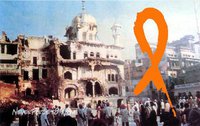
6/4 @ 2:15pm – More tweets by Panjabi MC, award-winning MC Amrit Tung, even hiphop artist B-Magic. Also pagh salute to our friends at Naujawani for keeping us up to date with their twitter feeds.
6/3 @ 4:45am – Since the post went up, Bhangra Star Jassi Sidhu, famed DJ Bobby Friction, Gurdarshan Mangat (Saintlion), and Raxstar. Keep the list growing!
So as they say, it starts with an idea. This one comes from Simrat Kaur from the Bay Area. Sometimes, it happens even on the BART.
It was an idea to increase awareness all over the world of the events that unfolded during Operation Blue Star in 1984. If people from the Middle East can use sites such as Twitter to start revolutions, then why not Sikhs? We need to stop using social networking sites for the purposes of hitting on girls and flirting with guys. We need to start a revolution. How long will Sikhs stay quiet? I am one hundred percent sure that if the same attack had been carried out on the holiest of places of any other religion, things would have definitely not ended this way.[link]
The challenge is simple and symbolic. We have not forgotten. Without justice, there can be no forgetting. So here is what we are asking. Use your twitter or start an account – but tweet the following #neverforget84 everyday and all day from Jun 3rd to the 6th. Here is the event page on Facebook. The goal is to get #neverforget84 to trend. Is it slacktivism, maybe….but can it have real ramifications, maybe…..
The Jakara Movement is participating so you can follow them too at @jakaramovement . At the time of this posting, even bhangra sensation Jassi Sidhu has tweeted #neverforget84 . With some encouragement, maybe even Jay Sean, Gurbaksh Chahal, and others will follow. Do your part! Tweet! and ask for favors from friends/family/people you are following!
Also for some general information about Sikhs and 1984 – follow this link.
Hope to see your tweet!
 Call me a hater, but I am just not that excited. Despite the exuberance of some of my fellow langa(w)riters, I am not convinced.
Call me a hater, but I am just not that excited. Despite the exuberance of some of my fellow langa(w)riters, I am not convinced.
Don’t get me wrong, one of the worst leeches that have siphoned the blood, resources, and morale of the Panth for far too long is the Family Badal.
While state coffers are in ruins and the once mighty land of five rivers finds itself facing ecological (decreasing water table and poisoned through pesticides) and social disasters (drugs and sex-selective abortion, immediately come to mind), the upcoming 2012 elections will be the most expensive show-down in the state’s history. With the anti-incumbency trend so powerful (nobody ever explores this phenomenon, but it is the travesty of Punjab, where you kick the ruling party out, not too support the opposition, but merely hoping for a ‘slight’ improvement), most are predicting a Congress victory.
In no small part this will be due to in-fighting within the ruling Shiromani Akali Dal. As Parkash Badal has turned the once Panthic Shiromani Akali Dal into a “Punjabi party” that is really nothing more than his own fiefdom for his patronage networks, public disapproval is on the rise. The people in Punjab are asking if their situation has improved over the past 5 years. Increasingly, they are saying no.
The greatest hope (or hype) about the upcoming elections is seen in Manpreet Badal’s Punjab People’s Party. Manpreet (Parkash Badal’s nephew) was thrown out of the party due to taking openly critical positions. Many youth are energized, as they see the PPP as a step towards a new future. Even in the diaspora, people (including my own father!) are excited, as I haven’t seen in years.

Image: Copyright Saffron Press
As a very proud Masi, I often find myself wondering how we can make events such as Vaisakhi, more meaningful for the next generation. Why is it that we exchange cards and gifts during Christmas, and yet for Vaisakhi, a Facebook status update suffices? While I fully support children exploring and participating in global celebrations, I think it is just as important (perhaps more so) that Sikh children are raised celebrating Vaisakhi in a similarly joyful way. For Sikhs living in the diaspora, Vaisakhi is often associated with nagar kirtans, melas, and gurdwara visits. This is a great way for children to celebrate the occasion with the community, however, I am not sure the event really resonates with them.
For example, did you know about the significance of kite flying during Vaisakhi?
The spring air of Vaisakh makes kite flying a popular pass time. A kite is called a Patang or Guddi Manjha in Panjab. The wood and bamboo roll on which the string is wound is called a Charkhadi. Children often give their kites a special name to reflect their personal designs such as: Pari (fairy), Chand Mama (man-in-the-moon/uncle moon), Shakkar Para (a panjabi sweet). Poetry may also be written in Panjabi on the Patang to send messages to a special person up on the roof. [link]
How fun would it be to have kite flying events for Sikh children? They could invite their non-Sikh friends and use it as a way to share their heritage. Don’t get me wrong, I think it’s important not to commercialize historical occasions – however, we have to be willing to celebrate our history so that it is meaningful. So I’m curious – what does Vaisakhi mean to you and how do you celebrate it? How would you like your children, your nieces or nephews to remember Vaisakhi? Or if you are a parent, how do you make Vaisakhi meaningful for your children?
Here is a useful document for parents and educators, describing ways to celebrate Vaisakhi with children. Happy Vaisakhi!
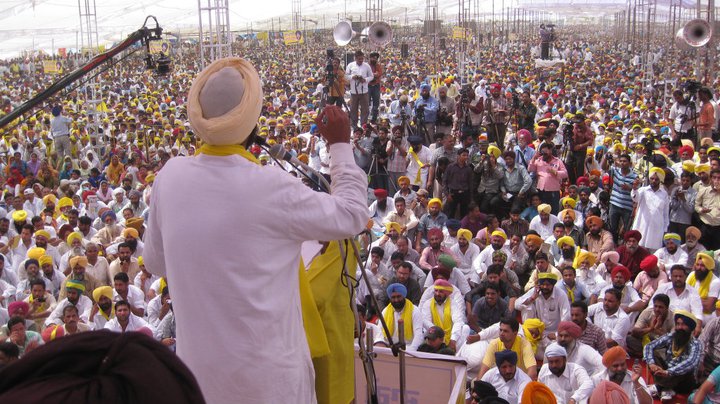 As we follow news on pro-democracy uprisings across the globe, Panjab has joined this conversation in it’s own way. On Sunday March 27th 2011, Manpreet Badal announced a brand new political party in preparation for February 2012 elections in Punjab. Thousands gathered at Khatkar Kalan village, the village of Shaheed Bhagat Singh, to hear the former Finance Minister of Punjab launch the agenda for The People’s Party of Punjab (PPP), promising a “better, progressive Punjab”. He asked supporters for their backing for the next 11 months as the party’s agenda reaches fruition. The party will be founded on the ideology of the martyrs.
As we follow news on pro-democracy uprisings across the globe, Panjab has joined this conversation in it’s own way. On Sunday March 27th 2011, Manpreet Badal announced a brand new political party in preparation for February 2012 elections in Punjab. Thousands gathered at Khatkar Kalan village, the village of Shaheed Bhagat Singh, to hear the former Finance Minister of Punjab launch the agenda for The People’s Party of Punjab (PPP), promising a “better, progressive Punjab”. He asked supporters for their backing for the next 11 months as the party’s agenda reaches fruition. The party will be founded on the ideology of the martyrs.
Aspects of the PPP’s agenda include: police reform, stopping the domination by an individual or clan, an assembly to evaluate ministers’ performance, government expenditure to be cut down drastically, only one security officer provided and extensive security to be paid for individually, only necessary foreign trips for leaders, free electricity provision will not be provided to wealthy farmers, revenue will be hiked by checking tax evasion, a desire to restore Punjab’s primacy in agriculture, investments in new industries, an increase in investments that create jobs, promotion of religious tolerance, scholarships provided for excellence in sports, speciality hospitals in each district and zero tolerance for crime and corruption. [via gpunjab news]
In an interview, Manpreet Badal spoke about the need for leaders to be role models and for the government to be transparent and accountable. In addition, he stated that 50% of seats will be reserved for women and youth. For those Panjabis living in Panjab or in the diaspora, who are acutely aware of the issues impacting Punjab’s growth and prosperity, the idea of a new party that is committed to change is a promising thought. What do you think? Will this be the change we have been looking for in Punjab?
For more information, see PPP’s Facebook page. After the jump you can view videos of Manpreet Badal’s announcement.
This post by our Mehmaan is none other than Harinder Singh. About Harinder Singh – he works with the Sikh Research Institute and the Panjab Digital Library to address all things Sikhi and Panjabi. http://twitter.com/1force
I have taken some time off to be Mr. Mom while my wife is on a work assignment in India. In preparing to make the move to Bangalore, I was excited about being in the land of MS Subbulakhsmi (renowned Carnatic vocalist) and Kalmane (locally grown 100% Arabica beans) coffee. Being here for about three weeks, this is what I have discovered: people are nicer than the North, infrastructure is horrible, and there is not much to see in the city. Even Frommers.com couldn’t come up a list of not-to-be-missed attractions in Bangalore, though people in India claim it to be a great city. I guess the new IT opulence has brought in pubs and gigs only (it is common for Indians to end almost every sentence with ‘only’).
Yesterday, I picked up my son Jodha Singh from the pre-school he is enrolled in here. His teacher said, he wouldn’t play Holi (“Festival of Colors”—though bastardized; some “celebrants” today throw sewerage on people as well!). Now, the legend of Holika is vanishing and so too the spirit of post harvesting thanksgiving prayer to the Almighty. Apparently, Jodha was upset when other children were throwing water and colors on him. I told Miss Priya that his aversion may have come because he has not partaken in this festival as the Sikhs of Panjab have a little reason to celebrate. She wasn’t sure how to respond; do most Panjabis and Sikhs know how to “play Holi?”
Conversations about hair are often emotional for Sikhs – and therefore they are conversations which we tend to avoid. For many Sikhs, it is a constant struggle to explain the historical significance of keeping our hair and/or wearing a turban while other Sikhs will argue that simply keeping your hair or wearing a turban by no means makes you a good Sikh. While that may be true, being able to have conversations about hair is an incredibly important and necessary dialogue for us to participate in. Many Sikhs in the diaspora have struggled to maintain their identity, while Sikhs in Panjab are struggling to be western. It’s such an interesting juxtaposition and anybody who has visited Panjab recently will see the dwindling number of Sikh boys choosing to wear turbans. In an effort to explore this issue, a fascinating documentary film – Roots of Love – by award winning filmmaker Harjant Gill is being released this Spring.
Told through the stories of six different men ranging in age from fourteen to eighty-six, Roots of Love documents the changing significance of hair and the turban among Sikhs in India. We see younger Sikh men abandoning their hair and turban to follow the current fashion trends, while the older generation struggles to retain the visible symbols of their religious identity. The choice of cutting one’s hair is one that not only concerns the individual and his family, but an entire community. [link]
I was given the opportunity to watch the entire documentary – I highly recommend the film and was drawn to its excellent cinematography. You can watch the trailer below and after the jump, read my interview with Director, Harjant Gill. Then, think about how hair plays a significant role in your life, if at all?
I recently came across information about Speaking in Tongues, a documentary which follows four diverse children on a journey to become bilingual. As the website states, “At a time when 31 states have passed “English Only” laws, four pioneering families put their children in public schools where, from the first day of kindergarten, their teachers speak mostly Chinese or Spanish.” Before I continue, take a peek at the trailer:
The film discusses the growing need that parents are feeling to raise their children multilingual.
Malcom X once designated the term ‘house negro’ to describe the African American slaves that were unwilling to leave their marginally comfortable lives subjugated by their white slave owners and very likely to support the oppressive system of slavery. These ‘house negros’ continued to exist throughout history helping perpetuate atrocities against their fellow African Americans, conspiring to no end to keep oppressive systems in place. Nowadays, we have a house Negro as a president, and in Canada, we have house Sikhs.
The last few years have been vital for the right wing in Canada. Canada has taken an unprecedented role in the international stage in upholding oppressive regimes and systems and continuing its role in the war on terror and the war in Afghanistan. Two wars which have produced over a million dead bodies, tens of millions more displaced and dispossessed, and countless lives traumatized. But we all know this; we all have been witness to the horrors of these wars and there’s no need to continue on exploring their horrors, but what is important is to see where our own Sikh leaders have been while millions of innocent lives were destroyed. What we find, surprisingly, is a lack of concern or at the extreme, complicity and support.
Being a Canadian and being sensitive to our communities suffering and that of other communities, I find myself pitted against a majority that is suffering from apathy. I see a Panjabi, Sikh community consistently disenfranchised from Canadian polity yet being consistently utilized as a major voting bank by exploitative politicians who invest in our communities apathetic and introverted nature. They see a community willing to throw support to any tom, dick and harry that greets them with a ‘sat-sri-akal’ and a half assed smile and we all too willingly welcome them in our homes and institutions. This is a narrative we find almost universally everywhere and though it does not necessarily imply a problem relative to only our community, it is a systemic problem that has to be recognized and corrected. But even with these corrective measures, we, in Canada, have begun to see these ‘house Sikhs’ prop up and this is going to be a struggle onto itself.
On a recent visit to Amritsar, one of the topics of interest was the newly approved plan by Chief Minister Badal for the revamping of the entrance to the Darbar Sahib. The plan includes a “state-of-art” restructuring of the entrance plaza.
According to one article, the new entrance would address accessibility for pedestrians and eco sustainability. It was also noted in this article that a timeline for completion and budget for this project has not been planned.
While the Panjab government is clearly looking to increase their tourism value, it was made clear to me that many Panjabis are not huge supporters of a project that will change the existing architecture around the Darbar Sahib. There is a strong sentiment that religious buildings should be treated as such, rather than as tourist spots.
The Darbar Sahib complex does rely on funds to ensure sustainability but with plans to enhance the Darbar Sahib with tourism in mind, the Panjab government will be treading a fine line to make sure that the holiest of places for Sikhs does not become impacted by visitors. Nevertheless, the Darbar Sahib is not the first place to be affected by increased tourism. Other “wonders” around the world are also working to address how to balance the sustainability of history with the growing inquisition of visitors.
What do you think? Should the Darbar Sahib be redesigned with tourism in mind or should efforts be made to keep the area intact as an important religious place?
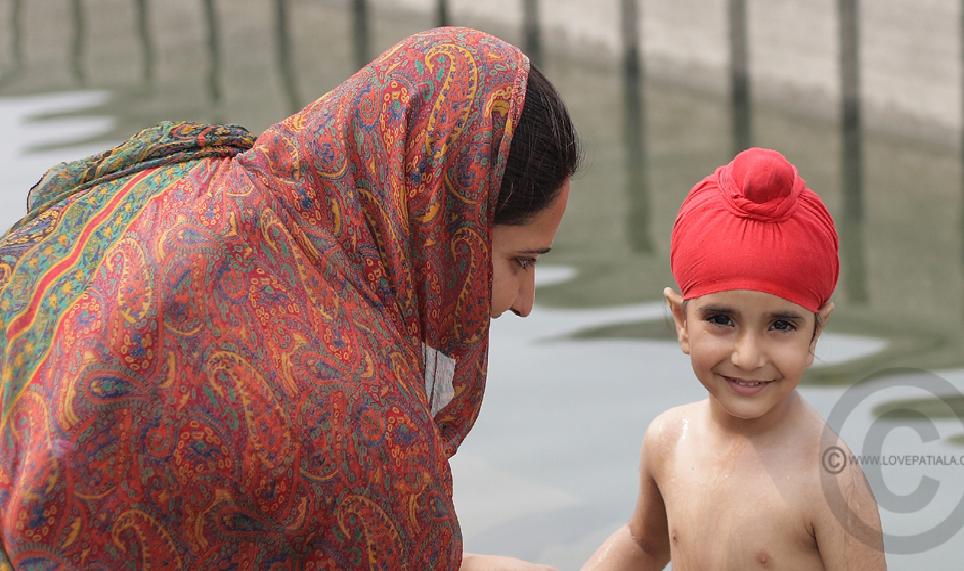 There was an interesting whimsical read in the Wall Street Journal by a Yale Law Professor, titled “Why Chinese Mothers Are Superior” The article states that the ethnicity has some possible substitutions, so I indulged, as its main opposition is suppose to be something called “Western.”
There was an interesting whimsical read in the Wall Street Journal by a Yale Law Professor, titled “Why Chinese Mothers Are Superior” The article states that the ethnicity has some possible substitutions, so I indulged, as its main opposition is suppose to be something called “Western.”
Here are some of its insights:
A lot of people wonder how Chinese parents raise such stereotypically successful kids. They wonder what these parents do to produce so many math whizzes and music prodigies, what it’s like inside the family, and whether they could do it too. Well, I can tell them, because I’ve done it. Here are some things my daughters, Sophia and Louisa, were never allowed to do:
- attend a sleepover
- have a playdate
- be in a school play
- complain about not being in a school play
- watch TV or play computer games
- choose their own extracurricular activities
- get any grade less than an A
- not be the No. 1 student in every subject except gym and drama
- play any instrument other than the piano or violin
- not play the piano or violin.
For more discussion, click below the fold
A new film, by Turbanology filmmaker Jay Singh-Sohal, discusses the presence of Sikhs in the World Wars. Sikhs at War is a free online educational short-film exploring one young person’s journey to discover the invaluable contribution made by his community during the First World War. This documentary has been made specifically with young people in mind. Educators can use the film as a resource to find out more about Sikhs who fought during both World Wars for Great Britain.
From their simple village life in the Panjab regions of modern day India and Pakistan, the Sikhs volunteered in their thousands to fight for Britain. During the Great War their numbers rose from 35,000 at the beginning of 1915 after the crisis in Europe turned into War, to more than 100,000 who were in active service by the time it ended in 1918.
The Sikhs formed 20% of the British Indian Army in action despite being only 2% of the population of India. They fought on all fronts in Europe, from Turkey and in Africa to the fields of Flanders. Their bravery is legendary – of the 22 Military Crosses awarded for conspicuous gallantry to Indians during the conflict 14 were rewarded to Sikh soldiers.
But for the thousands that left their homelands to join the fighting many did not return. During both the Great War (1914-18) and World War Two (1939-45) Sikh soldiers killed in action numbered 83,005 with 109,045 more wounded. One again despite being a minority in British India.
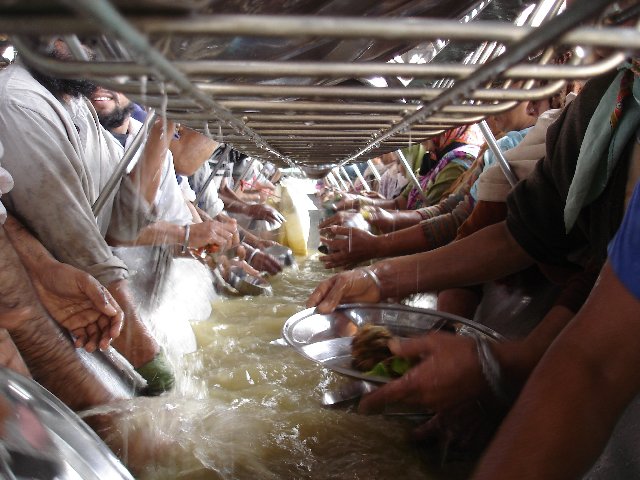 Anyone who has been blessed enough to visit the Darbar Sahib in Panjab will always speak about the amazing experience of Langar that takes place there. A free meal is provided to about 80,000 people each and every day. For those who have not visited the “Golden Temple” or perhaps are not familiar with this unique aspect of Sikhi, this NYTimes article provides a great overview of how souls are nourished in this small complex in Amritsar. The video below is titled, Peace and Roti at the Golden Temple and highlights how langar brings people of all faiths and backgrounds together as equals.
Anyone who has been blessed enough to visit the Darbar Sahib in Panjab will always speak about the amazing experience of Langar that takes place there. A free meal is provided to about 80,000 people each and every day. For those who have not visited the “Golden Temple” or perhaps are not familiar with this unique aspect of Sikhi, this NYTimes article provides a great overview of how souls are nourished in this small complex in Amritsar. The video below is titled, Peace and Roti at the Golden Temple and highlights how langar brings people of all faiths and backgrounds together as equals.
You can view the VIDEO here.
You can view the PHOTO GALLERY here.
Gone are the days of great public intellectuals in the Punjabi tradition. Whither is our Sirdar Kapur Singh to give intellectual insights, analysis, and voice to the problems of Punjab?
In contemporary Punjab, when crooks rule the halls of power in Chandigarh or even the SGPC offices in Amritsar have become the dens of thieves, we turn to another. For many in Punjab, that has become Babbu Mann.
It was Babbu Mann that caused a storm by telling the truth by merely stating that – while there was one Baba Nanak that on foot became the talk of the world, today’s so-called Babay drive around in fancy cars with red lights attached to the top (as VIPs).
Here at a recent concert at Wembley Stadium, Professor Babbu Mann corrects one of the Indian nationalists’ lies – that of Lala Lajpat Rai.
Lala Lajpat Rai is usually remembered as a ‘freedom fighter’ during struggle against British colonialism. Websites usually laud him in the following way:
In 1928, British Government decided to send Simon Commission to India to discuss constitutional reforms. The Commission had no Indian member. This greatly angered Indians. In 1929, when the Commisssion came to India there were protests all over India. Lala Lajpat Rai himself led one such procession against Simon Commission. While the procession was peaceful, British Government brutally lathicharged the procession. Lala Lajpat Rai received severe head injuries and died on November17, 1928 [link]
As Professor Mann suggests, read your history and learn how this so-called great “hero” died of a heart attack later and was hardly the martyr of Indian legend.

For the video of ‘Ik Baba Nanak Si’ mentioned earlier in the article, click fold and watch below.
Gurinder Chadha of Bend It Like Beckham fame returns with a new film, titled “It’s A Wonderful Afterlife.” The movie centers on the trials and tribulations of Rupy, a slightly overweight 20-something year old and her zealous Punjabi mother, who will stop at nothing to see her daughter happily married – including killing a few people along the way.
The film is being billed as a ‘zom-rom-com’ and is receiving rather mixed reviews in the UK. The film gives Punjabi billing on its soundtrack to well-known producers and artists, such as Panjabi MC, Kidd Skilly, and even Taz of Stereo Nation. See the trailer here and look for an interview with the film-director with Al-Jazeera’s Robert Frost after the jump. If you’ve seen the movie or are waiting for it, tell us your thoughts!

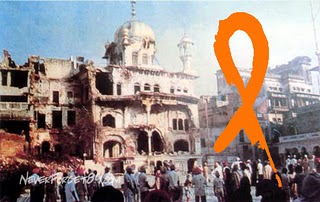 Guestblogged by Joo Kay Singh
Guestblogged by Joo Kay Singh
I’ve just spent the past hour watching 1984: A Sikh Story on BBC1 in the UK, and came away mildly disappointed, but not altogether surprised.
The documentary was framed as a “personal journey” for the presenter, Sonia Deol, to “unravel the events of 1984, an iconic year for Sikhs”, and informs us that “the bloody aftermath that followed [of Indira Gandhi’s assassination] so shocks Sonia that she is forced to reappraise the depth of her commitment to her faith”
For the first part of the program, we were served up with interviews mainly with Mark Tully and K.S. Brar who sounded like they were both regurgitating paragraphs from their respective books on the subject on the background to the Invasion. Sant Jarnail Singh was given the usual ‘congress stooge turned bad’ treatment by both, and the Darbar Sahib invasion covered without a hint of investigative journalism. Sonia failed to enquire why 37 other gurdwaras were attacked on the same day, if as per Tully and Brar’s insistence, Indira Gandhi was merely interested in Sant Bhindrawale. She similarly fails to question either of the men on the timing of the attack, on why the entire state of Panjab was placed under curfew, the expulsion of all foreign media, or the killings of pilgrims by the Army.



